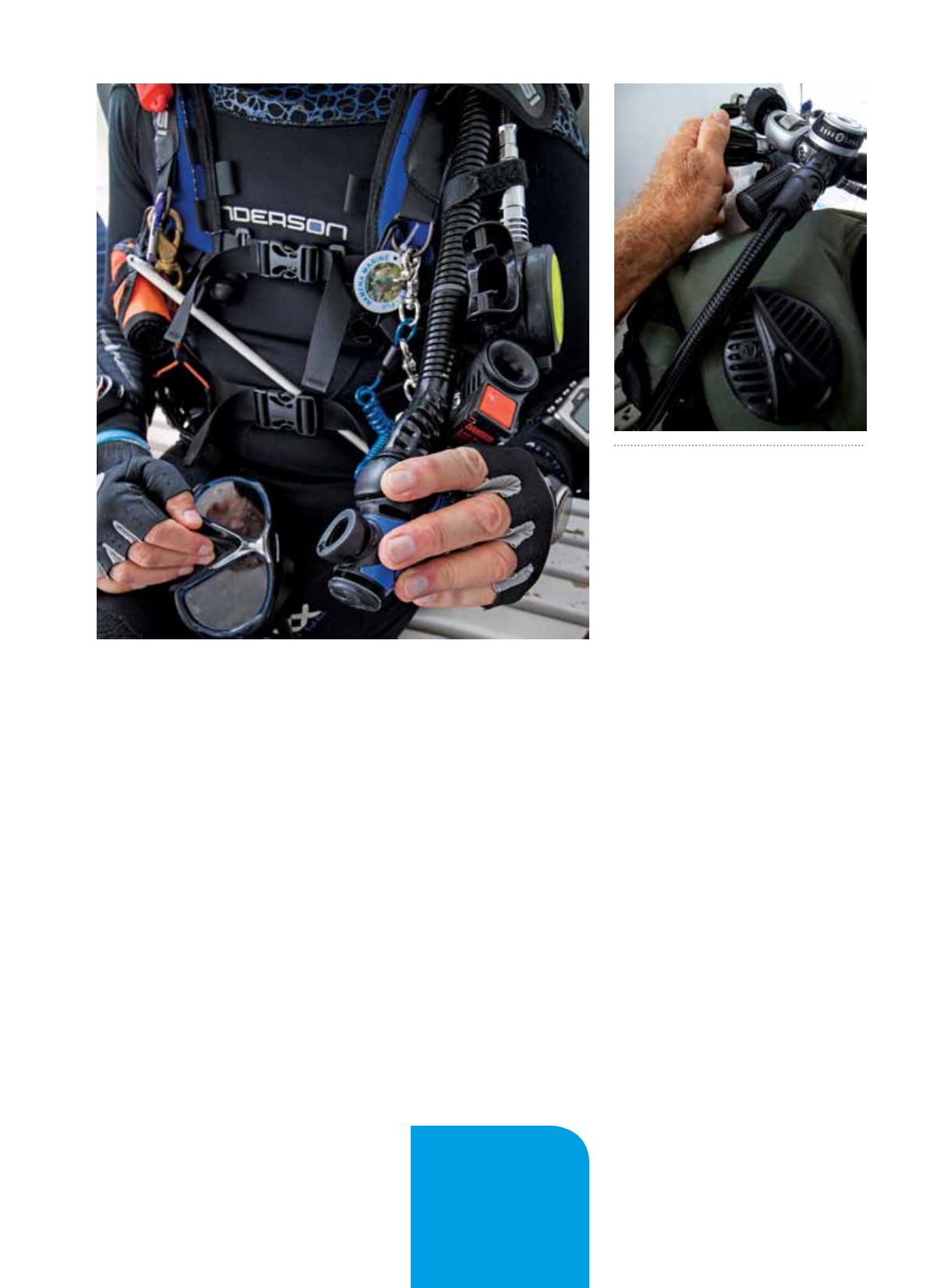

was at least 1,200 psi in my tank. I signaled “out of
air” to my buddy and used her alternate regulator.
We made a controlled ascent to the surface, and I
was not injured. Upon inspecting my gear I realized
that instead of turning on my tank all the way and
then half a turn back, I had turned it all the way off
and half a turn on. Upon descending below 33 feet
I experienced inadequate air-pressure delivery from
my tank to my regulator because the tank was barely
on and could not continue to deliver the same volume
of air at the increased ambient pressure
.
Together these two incidents highlight how to avoid
most gas-supply problems. First, make sure your valve
is all the way open or all the way closed. The days
when divers needed to turn the valve back a quarter
turn are long behind us. Second, and this is essential
for diving safety, every diver should look at his or her
SPG while taking two breaths just before entering the
water. If your tank is turned off or you are wearing an
empty tank, then as long as your valve is all the way
open or all the way closed you will be able to tell if you
are good to go by taking a couple of test
breaths. If the needle drops, then your valve
is closed, but if it stays still in the full zone,
then you should have adequate gas supply to
enter the water.
Buoyancy problems, although not reported to DAN
as frequently as gas-supply problems, may still be
common. Most are easily avoided by following these
three simple tips:
• Always test your power inflator before you enter
the water. If it is going to stick, then this is when it
is most likely to do so.
• Always check that you can orally inflate your BCD
before entering the water in case you need to do
so in an emergency.
• Look at your weight-removal system. If you are
using unfamiliar equipment, make sure you know
how to drop your weights, if needed. If you are
shore diving on a calm day, consider a quick
practice weight drop while floating on the
surface in 4 feet of water.
Keep in mind these few simple tips to prevent
the equipment problems most commonly reported
to DAN: Make sure your tank valve is fully open
or closed, and familiarize yourself with your BCD
and weight-removal system before
diving with them. By following these
suggestions, you can avoid many rare
but potentially serious equipment
problems.
AD
ALERTDIVER.COM|
109
For more tips and incidents
reports, or to report a diving
incident, visit
DAN.org/diving-incidents
.
STEPHEN FRINK
Reduce your risk of a gear-related incident
with a few simple steps: take two breaths
from your regulator on the surface while
watching your gauge, test your power inflator
before entering the water, and make sure
your tank valve is always either fully open or
fully closed.
STEPHEN FRINK


















